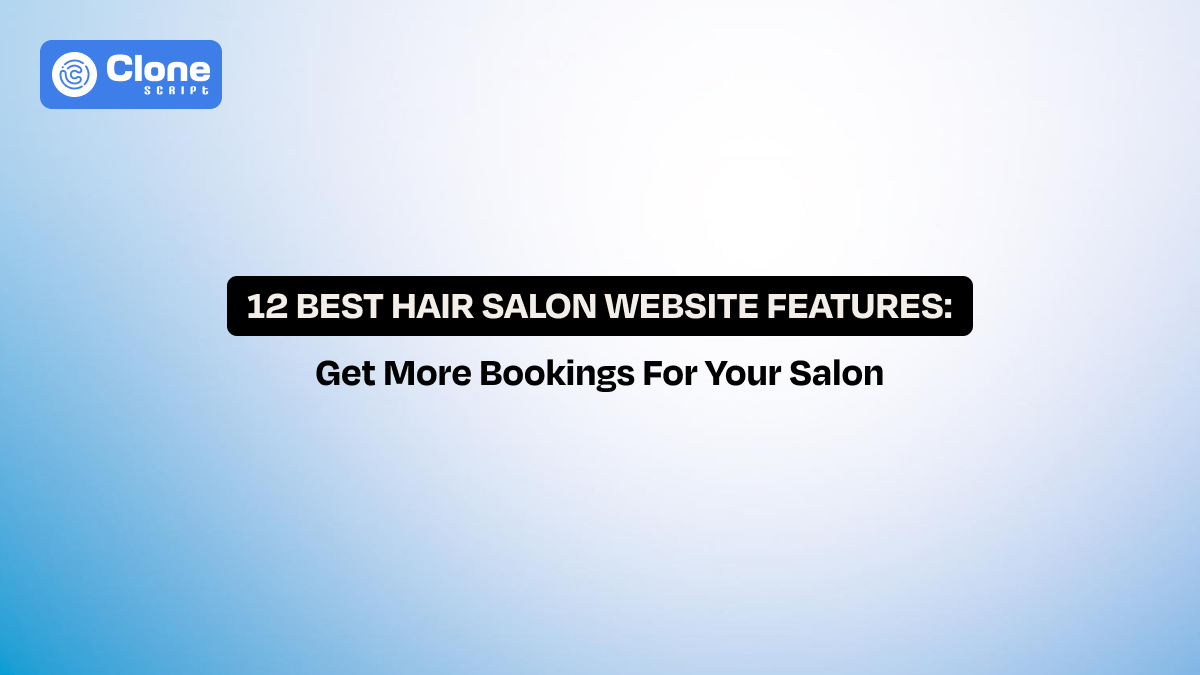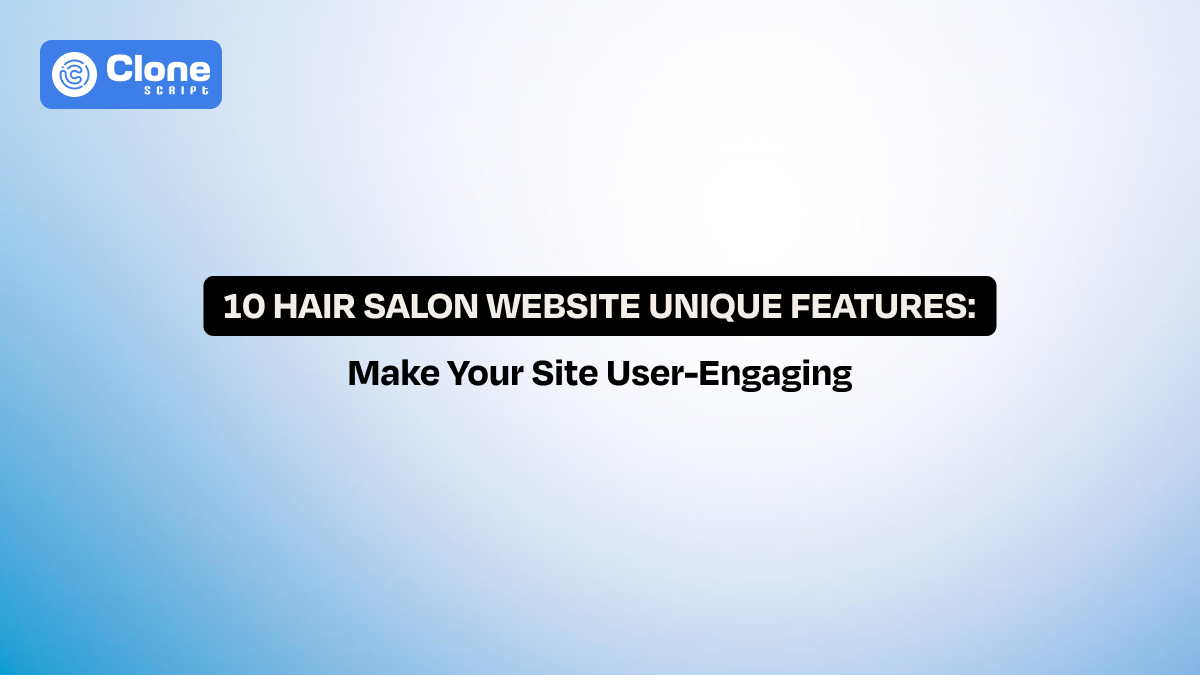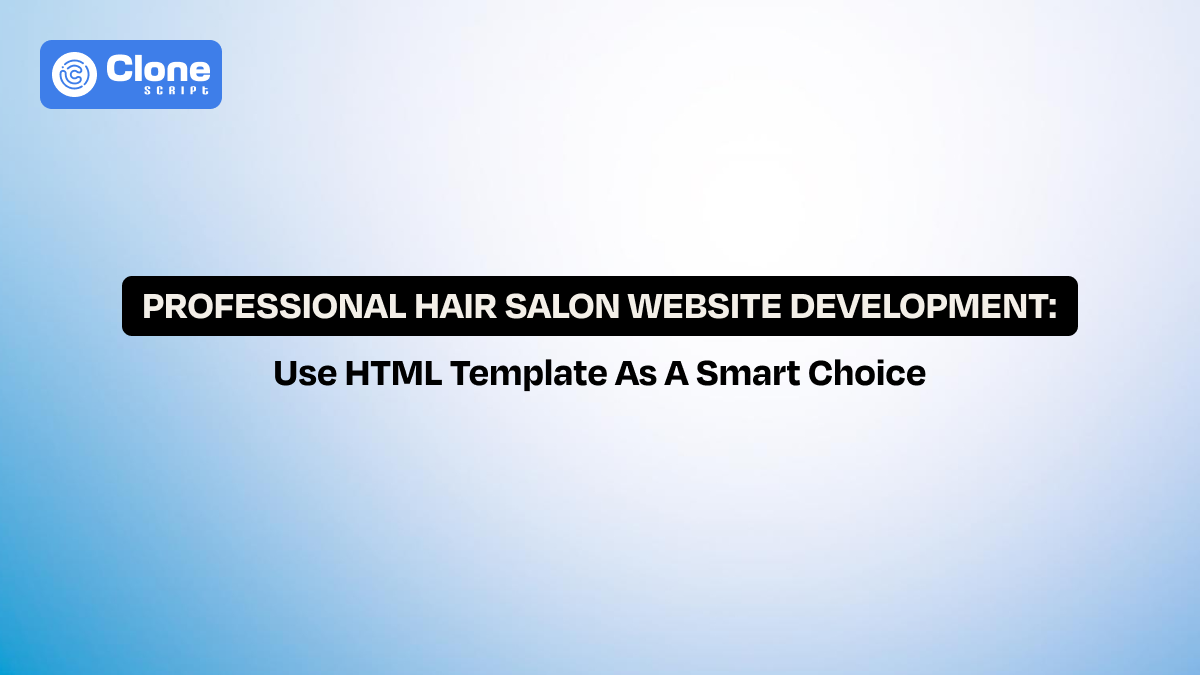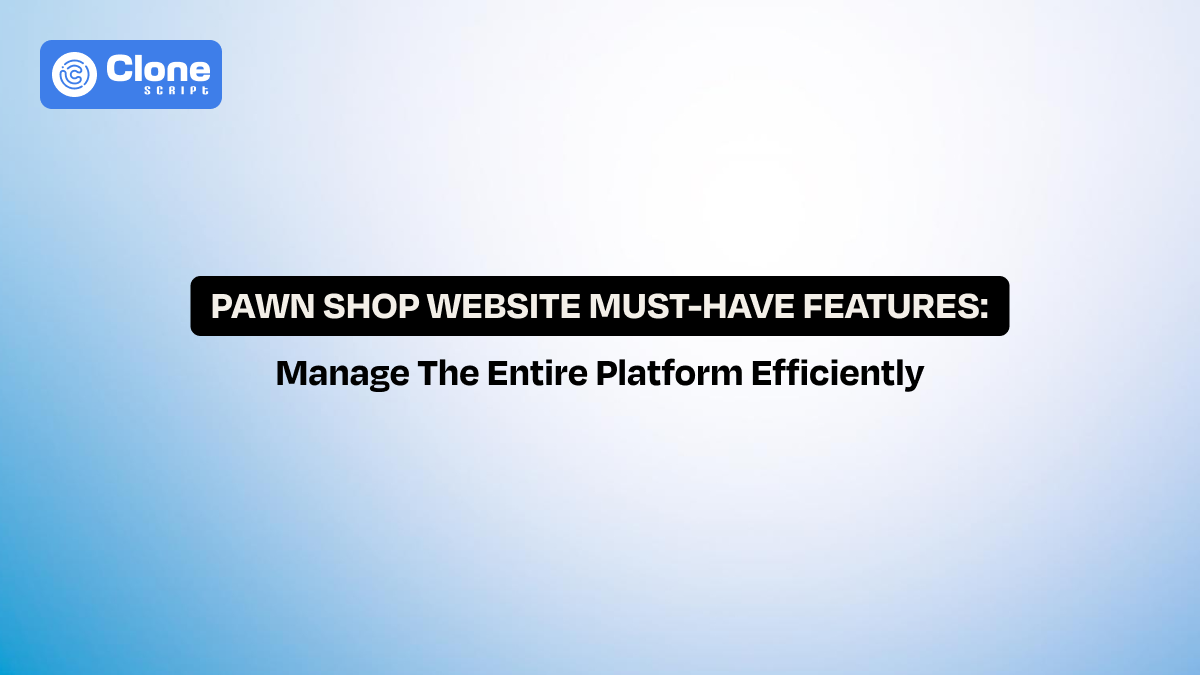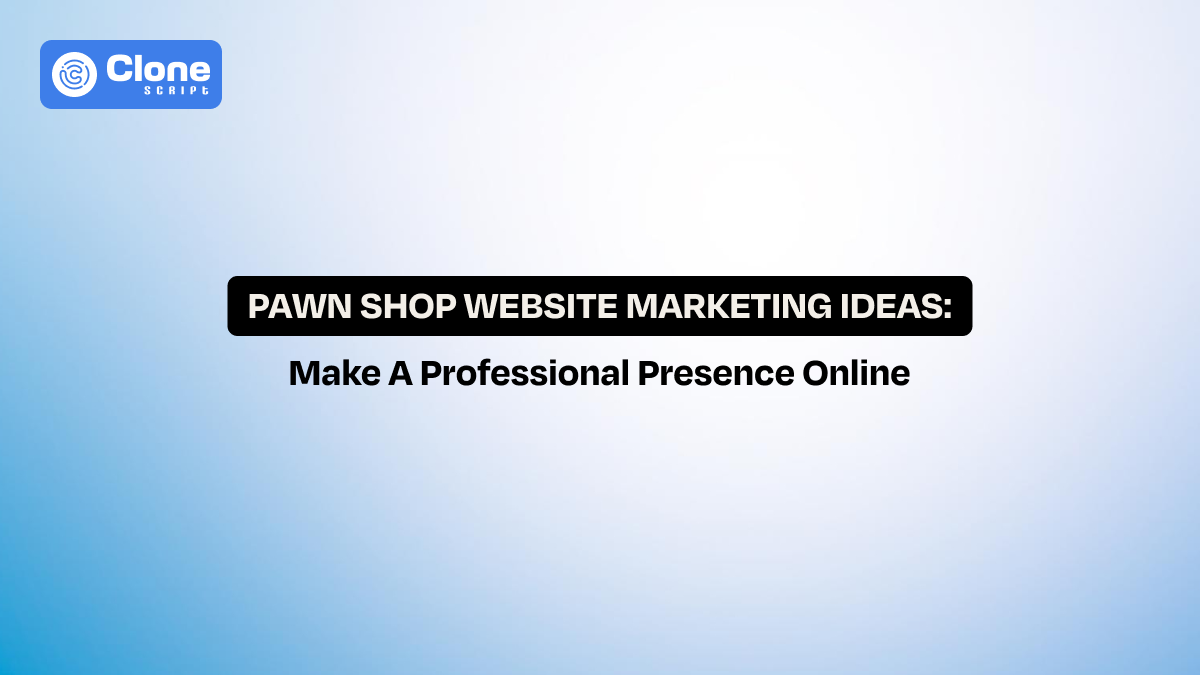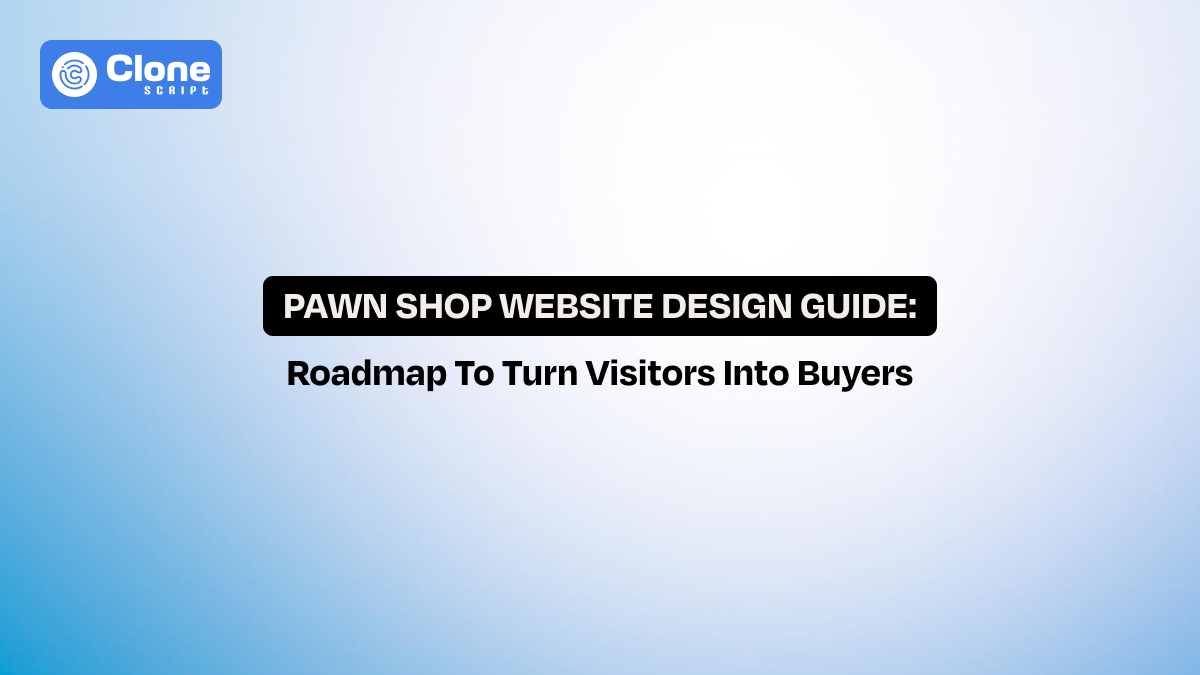What to Include on a Hair Salon Website to Attract More Bookings (Best Features)
More than 50% of hair and beauty salon bookings happen outside the usual 9 a.m.– 5 p.m. window, according to a study of 1,000 salons. This shows that a lack of digital access means missed revenue.
If your salon’s website is just a static business card rather than a fully-functional booking engine, you’re literally cutting off half your market.
Thinking of a website as just a showcase platform, then you’re wrong. It’s your receptionist, marketing manager, and client concierge, whatever you have to call, do it.
So, excited to know something different to transform your salon’s website into a client-generating machine? Let’s start. We cover everything related to real features, real data, and proven design psychology.
Basics come first.
What Is a Hair Salon Website?
A hair salon website is your digital storefront and virtual store. It is the first impression that defines your salon’s credibility and style.
It’s not just a portfolio or online listing; it’s a space where your services, pricing, team, and results come together with an intuitive online booking system. In other words, it works as your salon’s 24/7 business card that never sleeps, never forgets to smile, and always converts.
A high-performing salon website should be optimized:
-
Represent your salon’s brand personality and tone from the first impression on the landing pages, including content, services, and payments to bookings.
-
Offer fast, frictionless booking from any device. If a women try to schedule the salon visit from an iPhone or a college student books the appointment from Windows, they don’t have to face stuck.
-
Feature clear pricing, professional imagery, and social proof. This will be helpful for clients to know the services and perks they get before visiting the salon.
-
The entire website content is to reach your local audience with the best practices compliance.
In essence, it’s where trust and technology meet — the foundation for consistent client acquisition.
Let’s move forward to the next section.
Why Do You Need a Website for a Hair Salon?
You think my salon is going better and getting enough clients daily, so what are the reasons to go online?
Here are compelling reasons grounded in industry data and strategic positioning:
-
First, the user behaviour confirms it: in the modern hair-service market, clients expect digital convenience. For example, one study found 62% of clients switched salons because of poor customer experience, including online access.
-
A strong web presence correlates with higher client acquisition. Research shows that 61% of consumers say they’re more likely to visit a salon with a strong online presence.
-
A website optimized for local discovery and conversion will help you capture clients searching “hair salon near me” or “best colourist in [city]”. Without this, you risk visibility losses to competitors.
-
Operationally, the website can reduce administrative burden from automated bookings, confirmations, and reminders, freeing up staff to focus on service, not scheduling.
-
A well-designed site reflects your service quality, stylists’ expertise, and your salon’s positioning. A premium salon deserves a premium web presence for branding.
In short, a website does more than exist—it works for you.
There are two choices: 1. Go for the custom development, and 2. Develop a salon site with a template.
Top 12 Things to Include on a Hair Salon Website to Attract More Bookings
Now, you know the importance of a website in increasing bookings. But there’s something that can’t be negotiable. You have to prioritize them in the entire development cycle to marketing:
1. A Simple and Fast Online Booking System
Clients will abandon a booking path if it demands too many steps. With 65% of salon owners reporting increased retention after implementing online booking systems, the evidence is strong.
That means your online booking system must work 24/7 without any interruption.
Key elements to include in a hair salon website UI design:
-
Visible “Book Now” Buttons: Place booking buttons on every page, especially in the header and service sections. A strategically placed CTA ensures visitors never have to search for how to schedule an appointment.
-
Real-Time Availability: Show which stylists and time slots are available instantly. Real-time calendars reduce back-and-forth communication and create a sense of convenience that busy clients appreciate.
-
Automated Confirmations & Reminders: Sending instant confirmations and automated reminders reduces no-shows by up to 30%.
-
Mobile-Friendly Integration: Over 82% of salon bookings happen on mobile devices. A mobile-optimized system will help clients to book from anywhere, anytime.
-
Calendar Syncing: Integration with Google or Apple Calendar keeps both client and stylist schedules aligned, preventing double-bookings and improving organization.
In short, a fast, simple booking experience increases retention and directly helps increase salon bookings by removing friction from the process.
2. Clear Salon Services and Transparent Pricing
Transparency in services, inclusions, and pricing converts browsers into clients. And it’s a fact.
94% of customers are more tend to be loyal to a brand if transparency exists, and 73% of them are willing to pay more for a product that provides details.
Essential inclusions to never forget:
-
Detailed Service Menu: List every service your salon offers with concise descriptions. Include the expected duration, benefits, and stylist expertise level for each treatment.
-
Transparent Pricing: Display prices or starting rates for each service. When clients know what to expect, they’re more likely to book, especially first-timers unfamiliar with your brand.
-
Categorized Layout: Group your offerings under clear categories like Cut & Style, Hair Color, Treatments, and Bridal. Easy navigation keeps users engaged longer.
-
Highlight Trending Services: Feature popular or high-revenue services like “Balayage” or “Keratin Smoothing.” Clients are drawn to trends, and this helps boost conversions.
-
Direct Booking Links: Add “Book Now” links beside every listed service so visitors can take immediate action without returning to the homepage.
Clarity communicates professionalism, and in digital spaces, trust equals sales.
3. Before and After Gallery for Real Results
People always prefer a product or service that they can see. In an online salon, a curated before-and-after gallery builds trust and showcases your artistry.
After all, clients have an intention to take the service of your salon and justify the expertise. Also, to convince them that the virtual gallery is important.
Gallery must-haves to prioritize:
-
Authentic Client Results: Avoid stock images. Use real client photos (with permission) to show actual transformations. Authenticity boosts credibility and relatability.
-
Consistent Visual Aesthetics: Maintain the same lighting and backdrop to create a cohesive look. This has been presented as your salon’s professional brand identity.
-
Descriptive Captions: Include stylist names and brief details, e.g., “Balayage refresh by Senior Stylist Rachel.” It personalizes the result and promotes your team.
-
High-Resolution Images: Invest in professional photography or smartphones with excellent cameras. Blurry photos cheapen your salon’s image and turn clients away.
-
SEO-Optimized Alt Text: Add keyword-rich image descriptions like “blonde balayage in NY City” to boost search rankings and improve visibility in Google Images.
Fact: Websites with strong visual elements, especially video, see 88% longer visitor engagement times.
4. Real Reviews and Client Testimonials
Word of mouth has gone digital. Reviews and testimonials directly influence booking behavior.
Even with the strong citation, you can’t convince clients to take a once experience of your salon.
Only “Reviews and Feedback” of other clients can help to know what expertise you have and how it can help to satisfy their needs.
The question is how to build social proof.
Here are the best ways:
-
Display Verified Reviews: Showcase Google or Yelp reviews directly on your site. Verified ratings improve credibility and influence potential clients’ trust.
-
Video Testimonials: Short, candid client videos increase engagement and authenticity. Visitors relate better to real human stories than text alone.
-
Highlight Star Ratings: Include an average rating banner, such as “4.8 ⭐ Rated by 120 Clients.” This builds instant confidence and validates your salon’s quality.
-
Showcase Variety: Include reviews across different services — color, cuts, styling, bridal to demonstrate versatility and consistency.
-
Respond Publicly: Replying to reviews (both praise and critique) shows accountability and dedication to client satisfaction.
87% of consumers read online reviews, and 74% check multiple sites before booking. So, not having the service feedback will ruin the leads.
5. Easy-to-Find Contact Details and Location Map
Now, accessibility equals reliability. Clients should find your contact info instantly, usually within 2 clicks. If it takes too time and is not clarified, they simply avoid your brand. They prefer your competitors over you.
Contact essentials to know:
-
Consistent NAP (Name, Address, Phone): Use the same details across your website, Google Profile, and directories. Consistency improves your salon's local SEO and builds trust.
-
Clickable Contact Links: On mobile, make phone numbers and emails clickable for one-tap contact. It saves time and boosts user experience.
-
Google Map Embed: Integrate a map into your contact page so clients can get directions directly. It enhances local visibility and credibility.
-
Operating Hours: List working hours, closed days, and special timings. It reduces confusion and ensures smoother appointment scheduling.
-
Accessibility Notes: Mention parking options, nearby landmarks, or wheelchair access for added professionalism.
50% of local searches on smartphones lead to store visits within 24 hours. This means if the site is not optimized well, then you’re losing half of the bookings.
6. Mobile-Friendly and Fast-Loading Design
The website speed defines the user experience. For a mobile device, it has to be maintained well without affecting its performance. If you do, the worst situation it creates for your online salon, and at a certain point, you’ll be sidelined by the competitors.
Here are the optimization tips to follow:
-
Load Speed Under 3 Seconds: 53% of users abandon sites that take longer. It means you have to make sure it completely loads under 3 seconds.
-
Responsive Layout: Your site should adapt automatically to all screen sizes, desktop, tablet, or phone. It is perfect for readability and usability.
-
Minimalistic Design: Use clean layouts, neutral tones, and elegant fonts. A luxury design aesthetic enhances brand perception and reflects service quality.
-
Sticky Booking Button: Keep a “Book Now” button visible while scrolling to encourage impulse bookings.
-
Regular Testing: Audit your site monthly for broken links, slow pages, or display issues. Small glitches can cost major conversions.
Use a salon website template to get everything ready with the front-end development, and with the backend integration, the site is going to live.
As most salon bookings happen on mobile devices, your site has to be mobile-friendly to get more leads and successful conversions into appointment bookings.
7. Blog Section to Share Hair Care Tips and Trends
A well-maintained blog builds trust and drives organic traffic. It shows expertise while improving your site’s search visibility. One study shows that active blogs generate 55% more website visitors than those without one.
Key blogging practices to follow:
-
Educational Content: Share expert advice on haircare routines, scalp health, and styling techniques. Informative posts build authority and demonstrate that your salon genuinely cares about client well-being.
-
Trend Reports: Publish monthly updates on upcoming hairstyles, seasonal color palettes, and celebrity-inspired trends. These posts position your salon as forward-thinking and culturally relevant.
-
Behind-the-Scenes Stories: Highlight your stylists, training sessions, and product choices. Personalized stories humanize your brand and strengthen the connection between your salon and clients.
-
SEO-Optimized Posts: Use salon SEO best practices like keyword-rich headlines, internal linking, and meta descriptions to rank for queries like “best hair color trends 2025.”
-
Include Calls-to-Action (CTAs): End every article with a link to your online booking system to encourage readers to act immediately after gaining value from your content.
Educational blogs increase conversion rates by up to 67% because they create brand trust through consistent knowledge-sharing. It’s advisable to get a professional blog writing service if you don’t have a writing team in-house.
8. Promotions, Gift Cards, and Loyalty Programs
Strategic incentives nurture long-term loyalty and word-of-mouth marketing. The study report shows that loyalty programs increase repeat bookings by 20–25%.
Effective offers are included on the website:
-
New Client Discounts: Offer a welcome discount to first-time visitors. It lowers entry barriers and motivates hesitant prospects to experience your salon’s premium service.
-
Digital Gift Cards: Enable easy gifting options through digital vouchers. This adds a revenue stream and introduces new clients during holidays or special events.
-
Referral Programs: Reward clients who refer friends with exclusive discounts or free add-ons. This simple tactic creates organic growth through trusted recommendations.
-
Seasonal Packages: Bundle popular services like “Summer Shine Haircare Package” to increase perceived value and attract more bookings during slow periods.
-
Points-Based Loyalty Systems: Offer reward points for every booking or product purchase. Clients love earning tangible benefits, encouraging repeat visits and consistent engagement.
Over 60% of consumers prefer businesses with loyalty programs, showing they’re not just perks. Their expectations.
9. Strong Calls-to-Action (CTAs) on Every Page
Even a beautifully designed website fails without clear CTAs. One study found that websites with well-placed CTAs see a 62% higher conversion rate.
As your goal is to maximize conversions, the action buttons have to be as visible as possible so that clients can notice them.
CTA strategies prioritize:
-
Action-Oriented Wording: Replace generic text like “Submit” with powerful phrases such as “Book Your Hair Transformation” or “Reserve Your Stylist.” Clear intent drives user behavior more effectively.
-
Contrast & Placement: Use bright, brand-aligned colors for buttons and position them above the fold. Repetition across pages keeps action accessible at every stage.
-
Urgency Triggers: Add subtle pressure with phrases like “Limited Slots This Weekend.” Time-sensitive CTAs boost immediate conversions.
-
Dynamic CTAs: Customize calls-to-action based on page content. For instance, a blog about hair color trends could end with “Book Your Color Consultation Today.”
-
Analytics Tracking: Measure which CTAs convert best using tools like Google Analytics. Use insights to refine placements and copy for maximum results.
Tip: Avoid clutter. One strong, clear CTA per page outperforms multiple weak ones.
10. Social Media Links and Video Demos
Integrating social media and videos humanizes your brand and boosts engagement. The study reveals that 83% of consumers want more video content from businesses.
Incorporate visuals effectively:
-
Instagram Gallery Integration: Embed your live Instagram feed showing recent transformations. This provides social proof and encourages users to follow your salon’s updates.
-
Video Tutorials & Demos: Create short clips showcasing techniques like balayage, styling tips, or aftercare routines. These educational videos position your team as industry experts.
-
Behind-the-Scenes Footage: Offers glimpses of stylists at work or training sessions. Authenticity builds transparency and emotional connection.
-
Social Proof via Reels or TikTok: Post real-time client makeovers or reactions. Such bite-sized content can go viral and attract local attention.
-
Clickable Social Icons: Place icons in the header, footer, and contact page for quick access. Cross-platform visibility strengthens brand consistency and client trust.
Fact: Businesses using embedded video content experience 66% higher engagement rates than those relying on text and static images.
11. Policies, FAQs, and Aftercare Information
Clear policies reduce confusion and reflect professionalism. Clients appreciate businesses that communicate openly. Even in the salon industry, quick answering of policies and other related information creates chances to improve conversion rates.
What to include?
Here’s an explanation.
-
Booking and Cancellation Policies: Explain booking deposits, cancellation windows, and rescheduling options upfront. This minimizes misunderstandings and ensures smoother operations.
-
Refund and Service Terms: Outline refund eligibility and satisfaction guarantees. Transparent terms show integrity and protect your salon legally.
-
Frequently Asked Questions (FAQs): Answer common concerns like “Do you accept walk-ins?” or “What’s your keratin aftercare policy?” Structured answers also boost your salon’s search ranking visibility.
-
Aftercare Instructions: Provide downloadable or linked aftercare guides (e.g., “Post-color protection tips”). Clients value long-term support beyond their appointment.
-
Policy Visibility: Keep this section easy to find, preferably in your footer or booking confirmation emails. Clear communication demonstrates accountability.
SEO Note: Google favors sites with FAQ schema, increasing your chances of appearing in featured snippets and voice searches.
12. SEO Optimization for Local Visibility
Even the most stunning website won’t perform without optimization. Local SEO ensures that your salon appears in “near me” searches.
Best SEO practices to follow:
-
Geo-Targeted Keywords: Include specific location phrases like “Luxury hair salon in Bangalore” or “Best bridal hairstylist in London.” This attracts nearby searchers ready to book.
-
Google Business Profile Optimization: Keep your listing updated with accurate NAP details, service categories, and reviews. It’s the foundation of local search visibility.
-
On-Page SEO: Improve on-page search optimization with metadata, headings, and alt text. Use LSI keywords like “salon portfolio,” “hair salon online booking,” and “attract salon clients” throughout content.
-
Consistent Citations: Ensure your salon’s information matches across Yelp, Facebook, and local directories to strengthen Google’s trust in your business data.
-
Encourage Reviews & Check-Ins: Each review signals local credibility to Google. Respond promptly to feedback to boost engagement metrics.
Most local searches on mobile devices result in offline purchases within 24 hours.
Conclusion
A successful hair salon website comes with beauty and functionality. From fast online booking to strong CTAs, transparency, and SEO, each element plays a vital role. Prioritize usability, speed, and authenticity to attract more bookings and turn casual visitors into loyal clients who trust your brand.
FAQs
-
What should a hair salon website include to attract more client bookings?
A salon website must feature an online booking system, transparent service pricing, before-and-after photos, client reviews, and contact details with a Google Map. These elements build trust and convenience.
-
How can a salon website help attract new local clients?
By using local SEO practices for salons, including geo-targeted keywords like “hair salon in [city]” and optimizing Google Business listings, websites appear in “near me” searches. This drives nearby walk-ins and phone bookings, increasing both visibility and conversions.
-
Why do salon owners need an online booking system?
An online booking system allows clients to schedule appointments 24/7. Salons using digital booking see 30% fewer no-shows. Automated reminders and real-time scheduling help salon owners save time and improve operational efficiency.
-
What makes salon service pages convert better on a website?
Salon service pages convert better when they feature detailed service descriptions, transparent pricing, stylist profiles, and booking CTAs. Clear information removes hesitation and makes it easy for visitors to commit. Add “Book Now” links beside each service for instant action.
-
How can a salon blog increase website traffic and client engagement?
A blog helps salon owners share haircare tips, trend updates, and expert advice while boosting SEO. Engaging posts position your salon as an authority and encourage readers to book appointments directly.
-
Why is mobile optimization crucial for hair salon websites?
Over 82% of salon bookings happen via mobile devices. A mobile-friendly salon website ensures fast loading, easy navigation, and clickable booking buttons, key factors that convert on-the-go users into paying clients.
-
How can a salon brand use testimonials to build trust online?
Showcasing verified reviews and video testimonials increases credibility. Most people read reviews before visiting a local business. Real client feedback reassures potential customers and can raise your online bookings by up to 40%.
-
What role does visual content play on a hair salon website?
Visual storytelling is essential. Before-and-after galleries demonstrate skill and results, while short videos highlight your salon’s personality. Sites with visuals receive more visitors to book directly from your website.
-
How do loyalty programs on a salon website increase repeat clients?
Integrating loyalty programs and referral bonuses motivates clients to return. Salons offering digital loyalty programs achieve higher client retention. Online portals for tracking rewards make engagement effortless and measurable.
-
What are the best SEO strategies for a salon website?
Use geo-targeted keywords, optimize metadata, maintain consistent NAP (Name, Address, Phone) across platforms, and gather reviews regularly. Embedding a Google Map and using schema markup enhances local ranking and visibility in voice search and featured snippets.
 BTC - Bitcoin
BTC - Bitcoin
 USDTERC20 - USDT ERC20
USDTERC20 - USDT ERC20
 ETH - Ethereum
ETH - Ethereum
 BNB - Binance
BNB - Binance
 BCH - Bitcoin Cash
BCH - Bitcoin Cash
 DOGE - Dogecoin
DOGE - Dogecoin
 TRX - TRON
TRX - TRON
 USDTTRC20 - USD TRC20
USDTTRC20 - USD TRC20
 LTC - LiteCoin
LTC - LiteCoin

